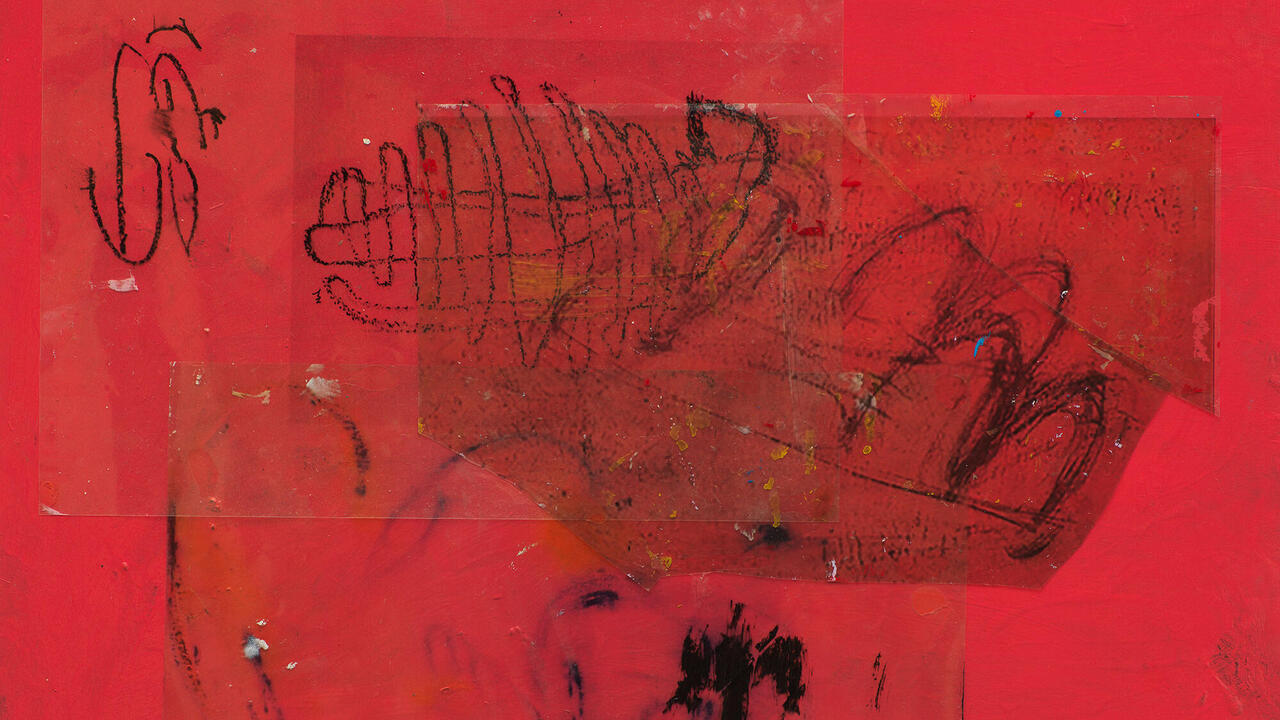Falke Pisano

The best way to kill a joke is to try and explain it. This axiom came to mind during the first instalment of Falke Pisano’s recent exhibition cycle at PRAXES. Among the works on view were two of the artist’s ‘joke sculptures’, Repetition and Dispersion/4 jokes become 5 (work) and Repetition and Dispersion/ 4 jokes become 5 (crime) (both 2013). In each, a propped-up wooden ladder acts as a support for five collages that mismatch and recombine images and captions cut from four different one-panel cartoons. Hanging beside the ladders are the remains of the sheets of paper from which the cartoons were removed. Surrounding these cut-outs are crudely drawn sketches of the absent figures; in the voids, texts dryly narrate the missing scenes.
Presumably, Pisano’s joke sculptures weren’t intended to elicit laughter. Instead, they break apart everything that makes humour work. In so doing, they also underscore something of a prevailing logic in the artist’s approach. Juxtaposing emotional and psychological expressions with impersonal and formalized structures – which Henri Bergson, in Laughter: An Essay on the Meaning of the Comic (1900), suggests is comedy’s stock-in-trade – Pisano systematically investigates the performative functions of language, and its inadequacies. Combining strict, modernist-inspired formalism with the dense, convoluted language of post-structuralist theory in abstract sculptures that diagram a fictional speaker’s various subject-positions, or in lecture-performances wherein a ‘complex object’ is built up over time, Pisano’s work can come off as humourless or stiff in appearance and tone. When seen alongside works such as the chalk drawings Blackboards, Structure for Repetition (not Representation) from ‘The Body in Crisis’ (2011–ongoing), the aforementioned cut-outs offered a welcome reprieve.
This presentation, which occupied the entirety of PRAXES’s downstairs gallery, was the first instalment of a multi-faceted six-month exhibition cycle. Curated in collaboration with Elena Tzotzi, Pisano used the idea of the ‘rehearsal’ as a device to create a series of shifting, on-site investigations. The exhibition developed over three instalments of various lengths – some even with their own alternate ‘takes’, in which the exhibition was reconfigured, with works taken down and/or new ones installed. Throughout the cycle, Pisano organized ‘Parlours’ which included, among other things, a reading by Jimmie Durham, whose book Poems that Do Not Go Together (2012) loosely inspired the show’s first ‘rehearsal’. For Pisano – an artist with strong conceptual leanings and an interest in long-term research processes – this elaborate exhibition model formed a kind of feedback loop, allowing for ongoing exchange wherein ideas could be developed, tested and revised in the presence of a public.
In addition to the joke sculptures and the chalk drawings, ‘Rehearsal I, Take One: Parts That Do Not Go Together’ included a two-channel video Disordered Bodies and Fractured Minds (Private M., Patient A., & Traveller H.) (2012) that references, among other things, the poet Henri Michaux’s psychedelic experiments. For the second ‘take’, the sculptures and videos were removed and in their place, a black paravent sculpture, Structure for Repetition (not Representation) (2012–ongoing), partitioned the space into a number of recesses and blind corners. Accompanied by a series of didactic informational keys, this work emphasized the brutalist architecture of the former community centre in which the gallery is housed.
The cycle’s final instalment, ‘Rehearsal II: Heart Head Hold-Up’, featured a paravent structure (this time ambiguously designated as a ‘non-work’) made out of colourful fabrics stretched across bamboo rods. Installed behind a wall in the rear of the gallery was the two-channel video Chillida (Forms and Feelings) (2006), in which an uninflected female voice describes in detail the experience of flipping through a book of black and white photographs of abstract sculptures by Eduardo Chillida. These awkward ruminations about aesthetic experience and the subject/object encounter provided a backdrop for works from the series ‘Figures of Speech’ (2006–10), also on view. By contrasting the different states of reading, looking and listening, ‘Heart Head Hold-Up’ evoked a textured repertoire of shared positions in which artist and audience can meet. As with jokes, the success or failure of such a meeting largely depends on the delivery.
















